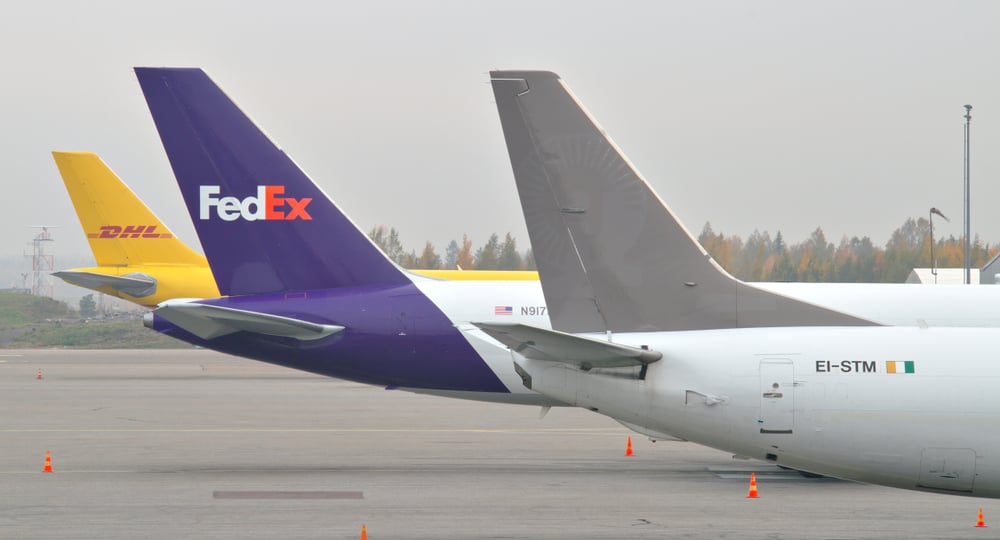
Though international air cargo registered a growth of 4% year to date through August, commentaries on its growth in 2018 have been littered with opinions which call it a slow year for air cargo movement, shrouding reality which remains quite different.This popular view stems from comparisons relative to the air cargo volume growth seen in 2016, when it breached 10% based on synchronized economic expansion worldwide, backed by robust industrial production and the quintessential ecommerce ‘boom’ – making 2016 an anomaly and not the norm.
“Air cargo has continued to grow, albeit slower than last year, owing to a lack of access to new freighter capacity which has hindered growth,” said Tom Crabtree, regional director of Airline Market Analysis at Boeing. “We are predicting about 4% growth this year over last year, and the five-year growth rate is approaching 5%. This is much better than the last decade when growth was approaching 3%, which had to do with the fact that we had an economic downturn in 2008-09.”
The rise of ecommerce is touted to have added to the air cargo growth percentages, but Crabtree figured that there weren’t enough statistics to back up the claims. “Freight forwarders who control probably 80-90% of air cargo flows on an international scale, consolidate their cargo on pallets to maximize loads and to get the best economic value for themselves and their clients,” he said. “The same has to be done with ecommerce, and the bad news is that nobody has any accurate data on how big the ecommerce impact is.”
Talking about the air freight peak season, Crabtree mentioned that it usually is during the latter half of September and October, as businesses rush to put products on the shelves by the mid of November – building up to the festive winter season in the Northern Hemisphere. “There is a resurgence of activity in the air freight sector, particularly in the express sector due to holiday shopping, which some might say is due to ecommerce,” he said. “But I do remember the times before ecommerce when FedEx, UPS, DHL, and other express businesses got very busy in the two weeks prior to the Christmas season.”
Historically, air freight movement has largely been about industrial cargo, with Crabtree estimating that around two-thirds of all the traffic to be between different manufacturing points on the planet. “Everybody thinks China is the world’s manufacturing center, but the truth is that a lot of sophisticated machinery used to drive the Chinese industry is actually made in Germany and other parts of the world,” he said.
“Somewhere around 9-10% of air freight flows are automotive related. It is not about completed automobiles, but work in progress – like drive shafts, sub-assemblies, and plastic fittings that move between factories to minimize inventory holding costs.
This would mean that air cargo movement is highly dependant on B2B activity, rather than ecommerce related freight. However, regardless of this, the ecommerce sector is certainly gaining ground over the B2B vertical every year. Statistics show that global ecommerce sales have shown gains of nearly 20% year-on-year on average since 2014, a sizeable percentage of which translates into air freight movement.
Crabtree mentioned that there are 24,400 aircraft currently in operation across the world, with only 1,870 of them being cargo planes. “Less than 8% of the jet transports are dedicated cargo planes, but yet their influence is powerful enough to carry more than half of the total air cargo traffic. But over the next 20 years, air cargo volumes on a global scale will double, and the freighter fleet will expand more than 70% during that time,” he said.
Air cargo volumes would keep climbing with international trade surge and higher industrial activity, as air freight movement today accounts for 35% of the value of goods being moved, even with it moving less than 1% of the total international freight volumes. Boeing predicts East Asia to take the lead over the five-year period between 2018 and 2022, growing to accommodate more than 60% of the total air cargo traffic. It further estimates air cargo growth to register 4.5% gains year-on-year, on the back of global trade growing at 4.2% in the same time frame.










